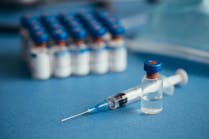FDA announces labeling changes on mortality, kidney injury, and excess bleeding with hydroxyethyl starch products
The U.S. Food and Drug Administration (FDA) issued a safety communication that it is requiring safety labeling changes to the prescribing information for the class of hydroxyethyl starch products to amend the Boxed Warning to warn about the risk of mortality, kidney injury, and excess bleeding. FDA is also requiring related changes to the Indications and Usage, Contraindications, Warnings and Precautions, and Adverse Reactions sections.
Safety issues include:
Hydroxyethyl starch (HES) products are approved for the treatment of hypovolemia (low blood volume). Recent data have associated administration of these products with certain serious risks.
FDA as completed a review of data and information on the safety of HES products, including data from randomized clinical trials, meta-analyses, and observational studies. These data and information reflect the following serious risks associated with use of HES products:
- mortality, acute kidney injury (AKI) (including need for renal replacement therapy (RRT), and excess bleeding in surgical patients who are treated with HES products; and
- mortality and AKI in blunt trauma patients who are treated with HES products.
FDA has concluded that changes to the Boxed Warning are warranted to highlight the risk of mortality, kidney injury, and excess bleeding, as well as to include a statement that HES products should not be used unless adequate alternative treatment is unavailable. In addition, FDA has determined that changes should be made to other sections of the prescribing information for HES products, including the Indications and Usage, Contraindications, Warnings and Precautions, and Adverse Reactions sections.
Recommendations for patients include:
Patients should be aware of the risks associated with the use of HES products and discuss these risks with their healthcare provider.
- Be aware that death, kidney injury, and excess bleeding have been associated with the use of HES products.
- Be sure to follow up with your healthcare provider as requested and follow all instructions. Report any unusual symptoms immediately.
- Symptoms of kidney injury can include:
- Change in the frequency, amount, or color of urine
- Blood in the urine
- Difficulty urinating
- Swelling of the legs, ankles, feet, face, or hands
- Unusual weakness or fatigue
- Nausea and vomiting
- Shortness of breath
There are currently three FDA-approved innovator HES products: HESPAN (6% hetastarch in 0.9% sodium chloride injection; B. Braun Medical Inc.), HEXTEND (6% hetastarch in Lactated Electrolyte Injection; BioTime, Inc.), and Voluven (6% hydroxyethyl starch 130/0.4 in 0.9% sodium chloride injection; Fresenius Kabi). HESPAN and HEXTEND are indicated for “treatment of hypovolemia when plasma volume expansion is desired,” and Voluven is indicated for “treatment and prophylaxis of hypovolemia in adults and children.” There is also currently one approved generic version of HESPAN that is distributed in the U.S. (6% hetastarch in 0.9% sodium chloride injection; Hospira, Inc.).
Data from a randomized controlled trial (RCT), a meta-analysis, and observational studies collectively show an increased risk of mortality, AKI, and excess bleeding in surgical patients who are treated with HES products, as well as an increased risk of mortality and AKI in blunt trauma patients who are treated with HES products.
Mortality and AKI in surgical patients includes
Data from a meta-analysis and observational studies collectively show increased risk of mortality and AKI (including need for RRT) in surgical patients who are treated with HES products.
- A meta-analysis of 15 RCTs (HES vs. crystalloids/non-HES colloids) conducted in cardiac, noncardiac, hepatic and renal transplant patients found a safety signal for RRT.
- A single-center, three-arm retrospective study in 796 high-risk vascular surgery patients found safety signals for mortality and need for renal replacement therapy (RRT).
- A single-center, three-arm retrospective study in 1442 thoracic surgery patients found a safety signal for AKI using the AKIN criteria. A single-center, two-arm (HES with crystalloids versus. crystalloids alone) retrospective study with propensity score matching in 29,360 noncardiac surgery patients found a safety signal for AKI.
- A single-center, two-arm retrospective study in 606 cardiac surgery patients found safety signals for AKI and coagulopathy.
- A multicenter prospective observational study in 529 kidney transplant donors who received HES found a safety signal for RRT.
- A single-center, three-arm, prospective, observational, sequential study in 6,478 post-cardiac surgery patients found a safety signal for RRT.
Mortality and AKI in blunt trauma patients include:
Data from observational studies show increased risk of mortality and AKI in blunt trauma patients who are treated with HES products.
- A single-center, two arm retrospective study of blunt and penetrating trauma patients found safety signals for mortality and AKI in blunt trauma.
- A single-center, single arm, retrospective cohort study of blunt (89%) and penetrating (11%) trauma patients admitted to the ICU found safety signals for mortality and AKI.
Excess bleeding in surgical patients includes:
Data from an RCT and an observational study show increased risk of excess bleeding in surgical patients who are treated with HES products.
- A single-center, two-arm RCT of 33 cystectomy patients found a coagulopathy safety signal.
- A single-center, two-arm retrospective study in 606 cardiac surgery patients found safety signals for AKI and coagulopathy.
Based on these data and information, FDA has determined that information on mortality, AKI (including RRT), and excess bleeding in surgical patients, and mortality and AKI in blunt trauma patients, must be added to the Black Box, Contraindications, and other portions of HES products’ prescribing information.





